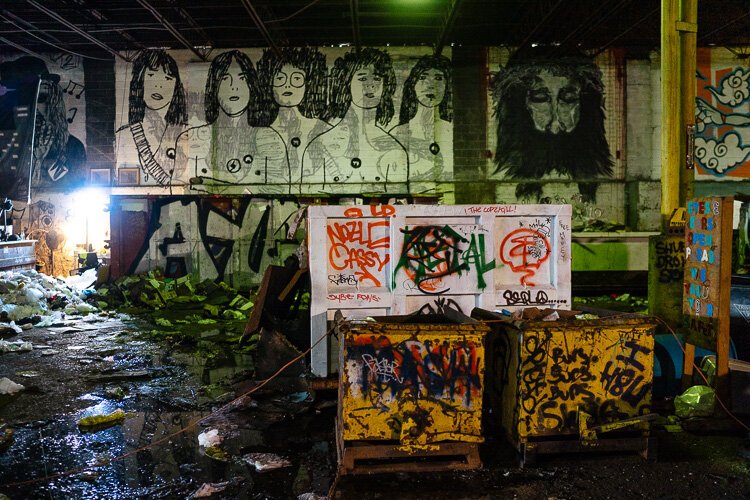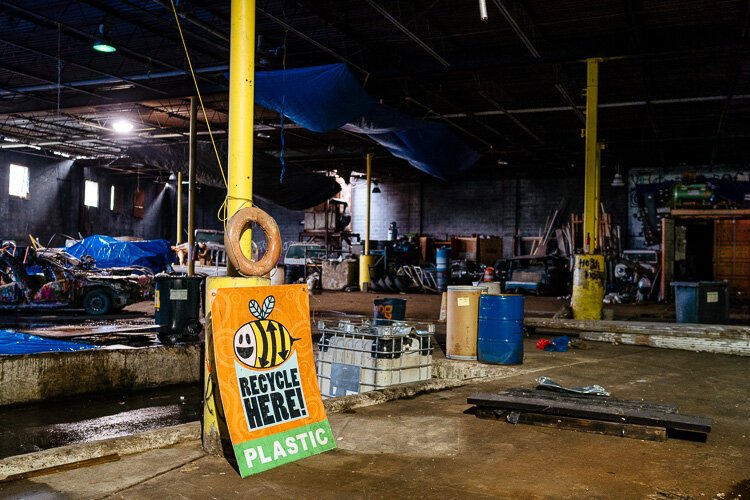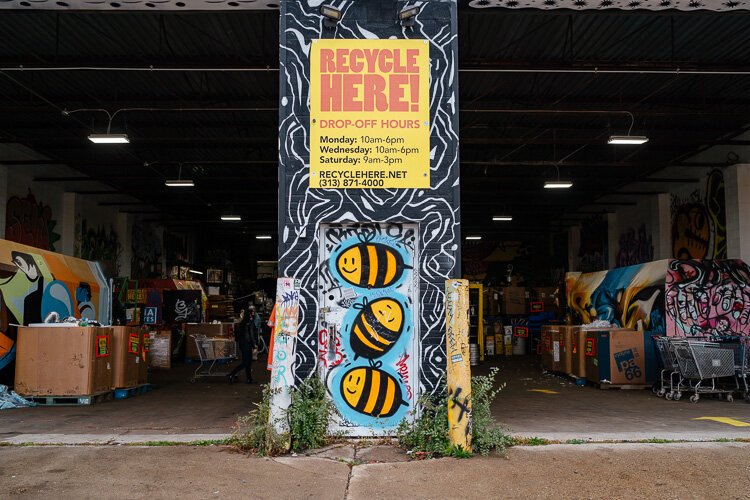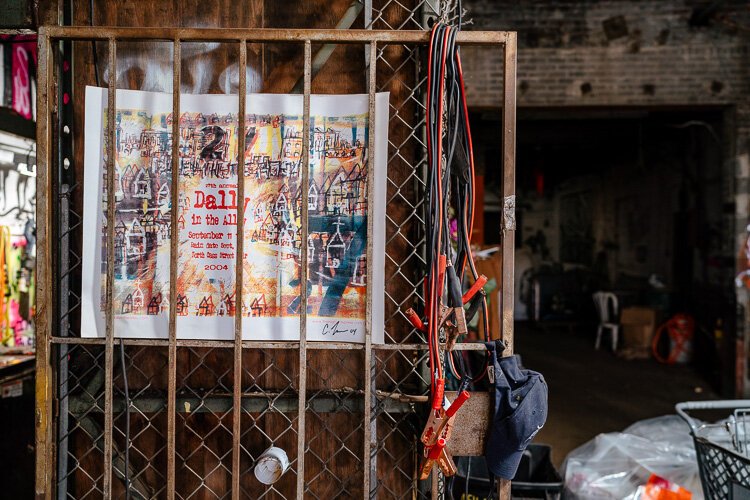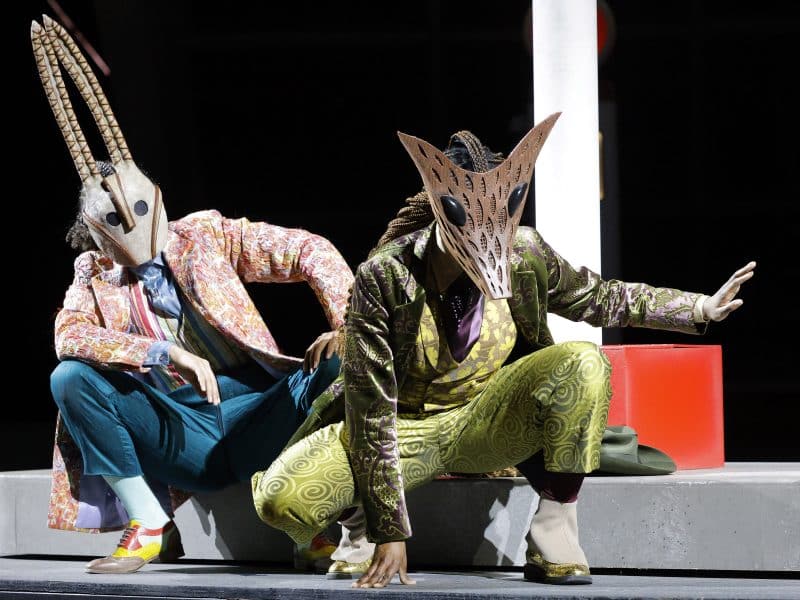How Dreamtroit could be a case study for places stemming loss of culture, affordability
Matt Naimi and Oren Goldenberg, the owners of the Recycle Here! and Lincoln Street Art Park complex, aim to combat displacement of artists and to preserve culture in the neighborhood where Naimi’s fostered a creative and green-minded community around a factory ruin and a garbage dump (as he fondly puts it) since 2005.
Zora Bowens can’t wait to graduate next month in Savannah and get home to Detroit. At 22, she’s confident this is where her future lies as a fashion photographer and brand experience designer. It wasn’t her definite plan while studying at Savannah College of Art and Design Hong Kong, which shuttered suddenly this spring, forcing her to return stateside to finish her degree.
But it became a certainty for Bowens after she spent the summer protesting racial injustice in Detroit’s streets, collaborating with local artists, and immersing herself in the city that raised her. At Lincoln Street Art Park in NW Goldberg, she helped to create art that would lift the voices of her community navigating an uncertain time.
“I realized my desire for my art is going to be in building this city up and helping people in whatever way I can. I feel there are opportunities for the kinds of ideas I have,” she says. The young artist is working on a pitch for Red Bull, and has recently pitched a concept to Gucci on creating an artist residency in Detroit for local fashion designers.
“I’m hoping I can influence companies that are fun and interesting to come to Detroit,” she says. “I don’t want to be anywhere else. That’s why I’m so excited for the Dreamtroit project, where I’m going to live for sure.”
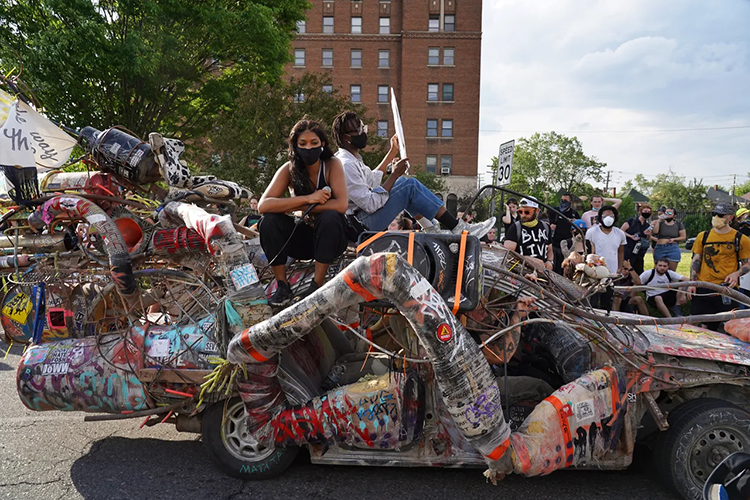
“Dreamtroit” is a major redevelopment venture of artists Matt Naimi and Oren Goldenberg, the owners of the Recycle Here! and Lincoln Street Art Park complex. Their goal is to combat the displacement of artists and to preserve culture in the neighborhood where Naimi’s fostered a creative and green-minded community around a factory ruin and a garbage dump (as he fondly puts it).
“We’re building a project that’s going to serve the next generation of artists that come to Detroit and the ones who are growing up here and need a place to stay,” he says. “The artists we work with on a daily basis, many have moved here because the cost of living and the availability of this material is so much cheaper than San Francisco, Oakland, LA, and Brooklyn. Once the deals and the freedom have gone away, what’s the incentive to come if it isn’t the final frontier?”
The duo’s ambitious project aims to bolster their existing offerings — Recycle Here!, maker spaces, and the environmental education nonprofit, Green Living Science — and to transform a 110-year-old Lincoln Motor Car factory into affordable live/make opportunities for artists and middle-income workers.
“We know artists are being pushed out of areas they’ve typically accessed in Detroit,” Naimi says. “People want to live here but the space just isn’t designed or zoned for it. After 15 years, we want to remain, so how do we evolve to address a need? This project seemed like the next step in creating use for an old, industrial auto ruin that’s seen many lives.”

‘Collisions of communities’
The 3.8-acre complex at the corner of Holden and Lincoln Streets has an eclectic history. Before it boasted Detroit’s only comprehensive recycling program, started in 2005, it housed a car assembly plant and a grocery distribution center owned by Naimi’s father. In 1997, Naimi purchased the property from his family. He and local filmmaker Goldenberg formed Life is a Dreamtroit LLC in 2017, and now share ownership of the complex.
The project, slated to finish January of 2022, plans to “activate the core” of the two-story 160,000-square-foot-warehouse that’s been largely vacant and streamline operations that previously filled the fringes. On the docket are a coworking space, a coffee shop, the relocated recycling center, and a large scale art and fabrication industry, which will be rented out by a single tenant. Most anticipated are the creation of 81 affordable live/work spaces: one-bedrooms, two-bedrooms, and co-living/working flats. Naimi and Goldenberg expect these will be a good fit for both local students and workforce.
“We believe there are 81 people in Southeast Michigan who are looking for a nontraditional lifestyle,” says Goldenberg. “They might work nights, they might be DJs or like to walk through the halls at 4 in the morning to see who’s up because they’re insomniacs.”
Of the 81 units, 20% will be for those making 50% of the area median income ($27,500 or less for an individual) and half for under 80% AMI. Market rate won’t exceed 120% AMI.
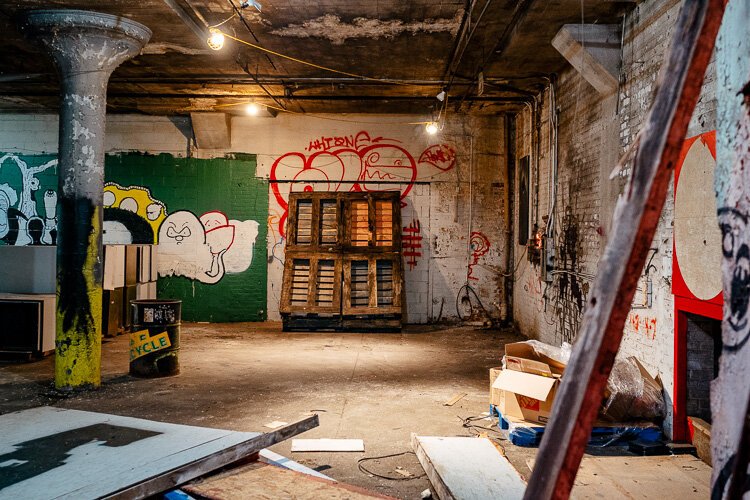
Naimi anticipates residents will often run into people working in studios, educating youth at Green Living Science, visiting the Art Park, and dropping off their recycling. He calls the planned interactions “collisions of communities.”
As an artist in residence at the Lincoln Street Art Park, Fel3000ft is no stranger to these collisions. He’s been a fixture on Holden Street for the past several years. “I kind of live there,” he says of the late nights he spends away from home.
“I’m not just a mural artist, I do galleries, installment pieces and full scale canvases. I also sculpt,” he says, “and I do all of that at Recycle Here! Over the years, Fel has “jumped in with both feet” to lend support by painting murals on neighborhood walls and donating his time and brand art to bolster education at Green Living Science. He describes the vibe in the maker spaces as one of “community,” “love,” and “respect.”
“It’s a safe haven for artists,” he says. “A place for people to become who they are, to try new things, and to explore their own artistic identity.”
Bowens says the welcoming atmosphere made it easy for her to connect with others. “Art Park gives artists a place where they can congregate. We don’t really have many spaces like that in Detroit that are consistent.”
When it comes to creation spaces, Fel, who started making public art in Detroit in 1982 when he was 11 years old, can’t even remember how many studios he’s lost through the years to gentrification. “Once we started painting in those areas, the rents started to go up,” he says, “and the artists got pushed out.” Yet, it was the artists who contributed their time, who built up the community and made the place noticeable, he adds.
“But these guys are trying to create a better environment, and a safer space architecturally where we can work more efficiently,” he says, “without gouging the eyes of the people that help them get there. I think that’s admirable behavior, and almost unseen in 2020.”
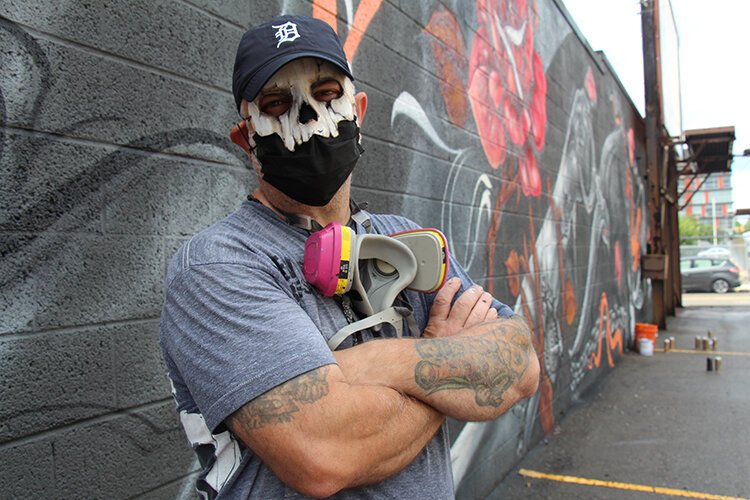
Physical safety is a big factor of the redevelopment plan as current buildings are falling apart, according to Naimi. The team closed Art Park this past January to begin expansion and stabilization, along with the renovation of what’s now Recycle Here!’s permanent location.
Naimi single-handedly ran operations here for many years, but when it became clear he couldn’t stay in the footprint much longer, Goldenberg, who’s spent the last 13 years helping to revitalize the Downtown Synagogue through nontraditional means like free programming and free membership, stepped up to help him tackle it. Together they’ve worked to “crack the code” on a project without a template.
Goldenberg and Naimi’s approach to the nearly $20 million development is one they call “a filmmaker and a garbage man doing this caveman style.” That’s shorthand for not going after traditional low income tax credits (LIHTC) that are fiercely competitive and can take a long time to acquire. Goldenberg says the duo wants to do things in a way that’s distinctively nontraditional, and shows that if you own a piece of property, there’s a way to build affordable housing without being a federally funded project.
“How do we make affordability attractive to the private sector?” he asks. “And for us, how do you really inject a different possibility into the Detroit narrative of development?”
The capital stack is diverse. Dreamtroit has acquired loans, grants, abatements, and historic tax credits ranging from $5.7 million from Capital Impact Partners to a $500,000 LISC loan through the Affordable Housing Leverage Fund. Other sources include IFF, the Michigan Community Revitalization Program. Naimi and Goldenberg are contributing the property, pre-development funds and development fees. Though commercial rent has not been set yet, the pair say they won’t be taking a profit on this endeavor in order to keep resident costs as low as possible.
The 24-hour economy and Holden Street
Dreamtroit is “about putting people first,” says Adrian Tonon, Detroit’s 24-hour economy ambassador. He’s been working with Naimi and Goldenberg, and other entrepreneurs, in the neighborhood to create something he hopes will thrive around the clock.
It’s art and music, but it’s also much more, he says. It’s having places open so when an employee at Henry Ford Hospital gets off work at 4 a.m. there are things to do: a restaurant, a market, a gym. It’s offering affordable housing for those who thrive in the nontraditional hours: artists, students, and late-shift workers. It’s about looking at the organic culture and vibe of a city and cultivating what’s there, rather than driving it and residents out.
“That’s what’s so special about Dreamtroit,” he says. “They’re trying to create a sustainable living situation for artists rather than displacing them by developing and raising rents. They’re pushing an affordability aspect that’s different from a lot of other places. That’s what’s going to keep the neighborhood authentic, and keep people there who make it unique.”
Bowens excited to live in a place that’s awake and alive all hours.
“There’s a lot of people whose lives don’t stop at 12 o’ clock,” she says. “Many artists work through the night. It would be so cool to be able to do things at any time. It’s nice for Detroit to be trying something different.”
Access and equity need to grow in this neighborhood, Tonon says, so that artists, students, entrepreneurs, and the workforce from Henry Ford can truly be stakeholders in the place where they work, live, and play. He’s collaborating with City of Detroit Director of Arts and Culture Rochelle Riley to approach areas like Holden Street, where culture is thriving and to ask how the city can help.
This includes bringing in businesses that are approachable and have that cool factor, he says.
Filthy Americans, a streetwear shop celebrating hip-hop culture, will open in early November on Holden Street, a stone’s throw from Motown Museum. Owner Filthy Rockwell is digging the community’s blend of arts and music. He hopes to bring in more friends like Herman Hayes, aka “Uncle Herm” of Dilla’s Delights, who recently lost his downtown building. Uncle Herm and the donuts that young J Dilla loved will be at Rockwell’s grand opening, and at the Holden St. cleanup he’s organizing between volunteers and the city on Oct. 24 and 25.
Considering the free-spirited artists drawn to the area, affordable eats in the neighborhood are a must, Rockwell says. Councilwoman Raquel Castaneda-Lopez is working to extend the city food truck ordinance to 3 a.m. with places like this in mind. Food trucks are part of the planned ecosystem at Holden and Lincoln, though no specific vendors have been selected yet.
Once it’s running, the Dreamtroit project may serve as a case study for places trying to stem the loss of culture and affordability, Naimi says. “Just showing you can anchor a community with something—we built a community around a recycling center, a garbage dump, basically.”
The key is to find people who inspire others, who’ll come and participate. Culture can be built around that, he says, in many different places around many different municipal structures.
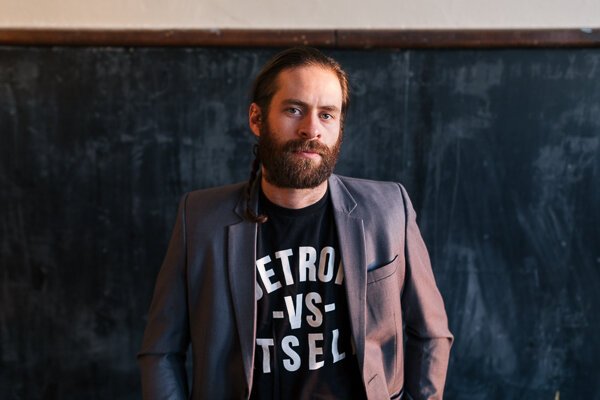
Goldenberg is excited to show the lending community they can take a risk with non-developers who will “actually give a better product because their bottom lines are different.” There are benefits to working in nontraditional avenues, he says, where tenants coming into commercial spaces are your friends. This breeds collaboration and mutually beneficial environments.
“It’s really about creating the lifestyle and landscape we want to continue being a part of and what attracted so many people to Detroit over the last 20 years,” he says. “If that goes by the wayside for high-end development, people won’t want to live in those spaces because they’re here for the culture.”
This article is part of our Equitable Development series, in partnership with Henry Ford Health System, where we explore neighborhood progress and impact of Henry Ford Health System and community partners. Stories illustrate growing an inclusive Detroit in a way that allows people from all races, classes, and abilities to participate and benefit.
All photos by Nick Hagen unless otherwise noted.

